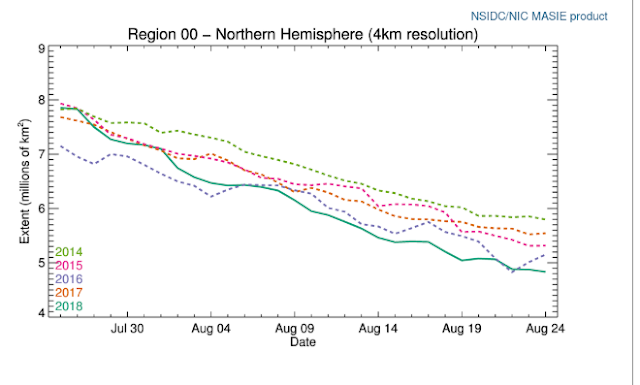http://eh2r.blogspot.com/2018/08/slow-bye-bye-of-east-siberian-ice.html
If we resample Arctic ice data 25 km^2 pixels down to a higher 4 km^2 resolution the ice extent looks somewhat different. This processing requires some assumptions, some modeling and some blending in of additional data, so I prefer not to use it, but it does give us some additional insights. The difference in maps compiled from these two data sets gives us some idea of how badly the ice has been chopped up by this year’s frequent cyclones.
Compare this MASIE high res data for August

with the low-res raw data for the same time period in the Charctic interactive graph
https://nsidc.org/arcticseaicenews/charctic-interactive-sea-ice-graph/
and you get different rankings for different years, as well as lower sea ice extents all around. The latter is probably just an artifact of the processing, but as I like to point out, its not the absolute figures that count, its the trends.